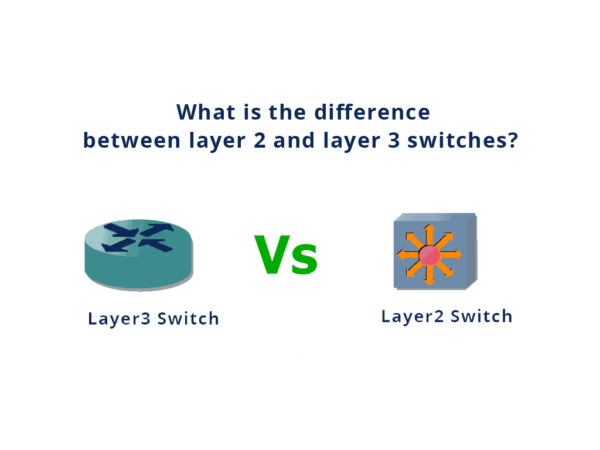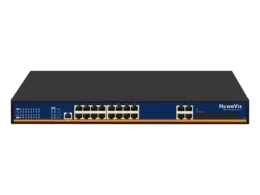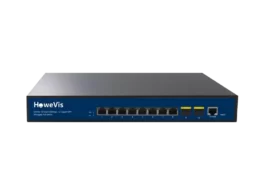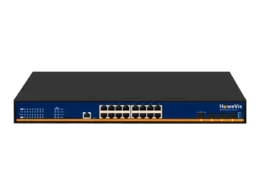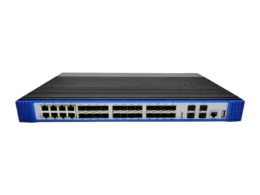Have you ever wondered about the electrical supply? What exactly is it? Which system are you using at your home? A continuous power supply is necessary in our homes or offices. Let me assume an example of the office. What do you do at the office? I’m talking about data management at offices. You keep a record of everything. Hundreds of data applications and computers are available.
What makes it possible to get both data supply and power? One more thing, which system is connecting all your computers? Maybe a switch, right? Which type of switch do you have at your office? I suppose Ethernet — is commonly available in every industry. To get a flexible range of power, we use Power over Ethernet technology in the Ethernet switches.
What is an Ethernet switch?
Before heading to the main topic, I would like you to learn the Ethernet switch. Have you seen network switches at your office? What do they do? Connect your computers or power devices. So, it is now easy to define the Ethernet switch.
An ethernet switch is a network switch that connects multiple devices and provides them with power and data connection. If you want to get the maximum data speed up to 10 gigabytes, try PoE switches.
What is a layer 2 Ethernet switch?
Ethernet switch functionality matters a lot when it comes to the networking of multiple devices. So, there are two types of layer switches— Layer 2 and Layer 3.
A layer 2 Ethernet switch receives the data packets and acts as a bridge to transfer them to the destination device. It only functions as a bridge to connect multiple devices and transfers files through their MAC address. No routing features are available in layer 2 switches. Moreover, they break the large-sized collision domains into smaller ones to prevent problems due to collision.
What is a layer 3 Ethernet switch?
Just like layer 2, but procures some extra features. Layer 3 Ethernet switch receives data packets, analyzes them, and transfers them to the destination computer. No need for a MAC address as it transfers over an IP address. Moreover, it functions as a router to improve the performance of the network.
What is the difference between the layer 2 and layer 3 Ethernet switch?
Are you looking for Ethernet switches? Maybe it is the right time. But, before doing that, learn which one is better. The wrong choice can decrease the network performance and waste your money and time. Therefore, I have written this article to help you understand the primary difference between layer 2 and layer 3 Ethernet switches.
To let you understand more about
- We use the layer 2 switches mainly to reduce the network traffic and improve the quality. While the layer 3 switches implement the Virtual LANs.
- Layer 2 switches receive the data packets and transfer them directly to the destination address without analyzing them. Compared to it, layer 3 switches work differently. They receive data packets, analyze them, and select the destination address to send them.
- Layer 2 switch finds the MAC addresses of both devices — incoming and target devices. If we talk about Layer 3, it uses the IP address which is a more effective way to communicate and transfer the data. It can use the MAC address as well.
- In the layer 2 switches, devices can send the data packets within the network. Layer 3 switches enable communication outside the network along inside. Impressive.
- Layer 2 is a single broadcast domain, while layer 3 is a multiple broadcast domain
- Layer 2 switches offer only the bridging options to connect the devices and transfer the data over the network. In the case of the layer 3 switch, the scenario is different. Layer 3 switch offers both bridging and routing facilities to improve the quality of traffic.
- For low or medium traffic, we can use the layer 2 switches. By that means, it is not suitable for the high traffic. Compared to it, the layer 3 switch is best for high performance over high-traffic data.
Advantages and Disadvantages of Layer 2 switch:
Layer 2 switch is part of our networks, especially at centers where there are low or medium traffic requirements. Here are the advantages and disadvantages of the layer 2 switch.
Advantages:
- Bridges the devices and allows data transfer based on the unique MAC address of every device.
- No need for extra setup or management. You can quickly deploy these types of switches at your home.
- Inexpensive with better features of networking
- Effectively handle the low-traffic networks and improve the efficiency
- Improved security settings
Disadvantages:
- Limited to only MAC address. Do not use the IP address or other options to transfer the data.
- It does not analyze the incoming data packets. Just move them to the destination address
- Sometimes layer 2 switch doesn’t break up large collision domains into smaller ones properly.
- There are no routing features for the IP address.
Advantages and Disadvantages of Layer 3 switch:
High performance over the high-traffic network makes layer 3 switches suitable for your system. It offers data packet analysis and transfer, but it also does the routing job for network traffic. Below, you can look at the detailed pros and cons of the layer 3 switch.
Advantages:
- Supports data transfer over both IP address and MAC address.
- Performs intelligence functions by analyzing the incoming packets and sending them to the given device over an IP address.
- Provides routing in addition to the bridging of the devices.
- Reduces the traffic volumes and improves the performance of the network.
- Flexible features with advanced routing and managing data connection
Disadvantages:
- Quite expensive compared to the Layer 2 Ethernet switch
- It doesn’t offer a vast area network(WAN) functionality.
Which one is better?
What have you understood from the above discussion? Can you decide on the switch for your network? If not, no worries, I can help you make informed decisions. In the above discussion, the layer 3 Ethernet switch is the winner. What if you can’t afford it as it is expensive? Any solution? Go for the layer 2 switches in this case. Moreover, if you have high traffic over your network, layer 3 would be with routing features to improve the performance.
The best practices include jotting down your requirements, comparing them with the switch, and choosing the best one. I mean the switch that falls under your budget and is perfect in every aspect. Therefore, I would recommend making better choices.

